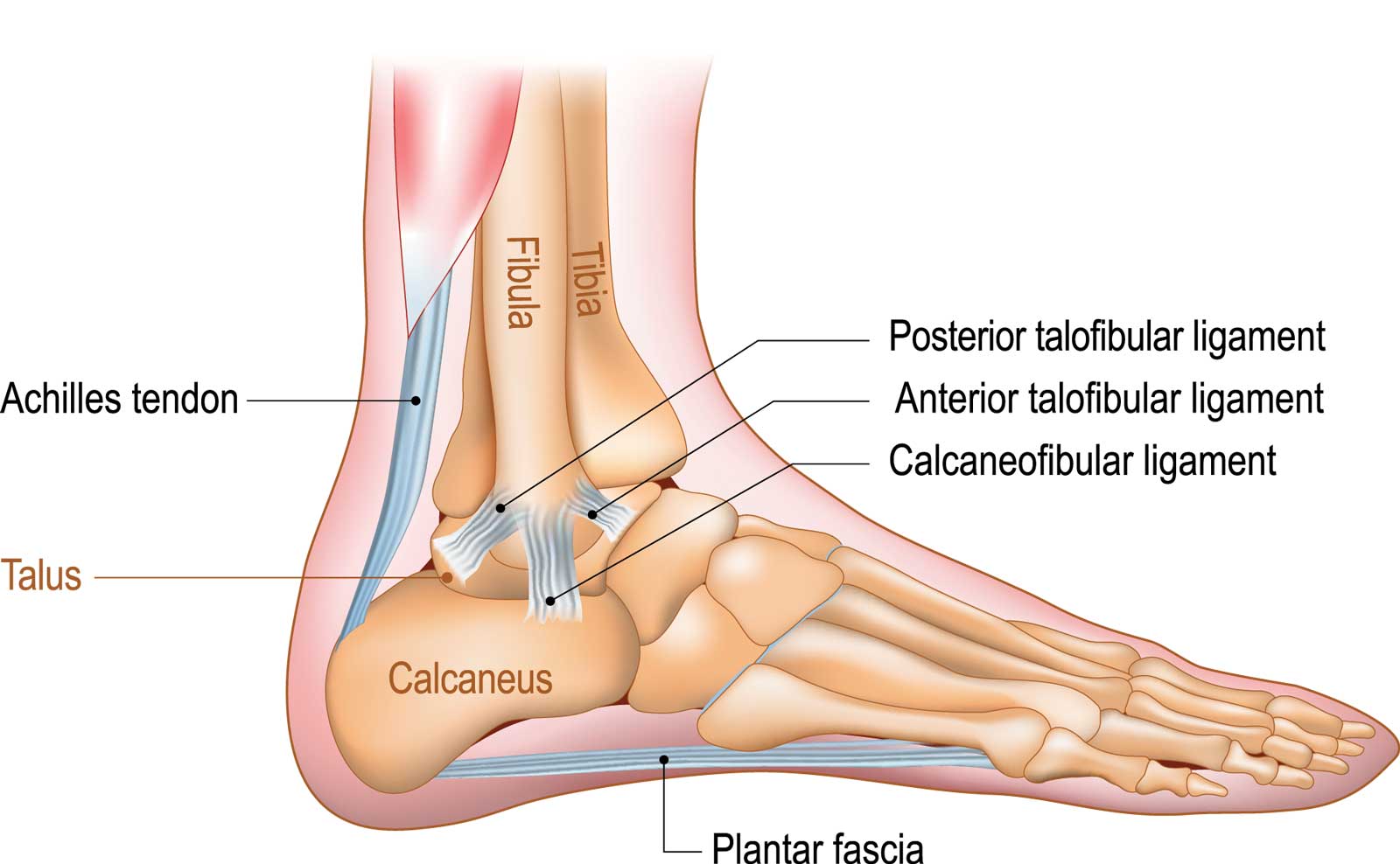The large tendon on the back of the heel is known as the Achilles tendon. It connects your calf muscles to your heel bone and is used when you walk, run, and jump. Achilles tendonitis results when the tendon is overused and small tears occur in the tissue, which leads to swelling and pain in the back of the ankle.

Symptoms of Achilles Tendonitis
Simply defined, tendonitis (or tendinitis) is the inflammation of a tendon. There are two primary types of tendonitis.
Acute Achilles Tendonitis symptoms include:
- Gradual onset of pain over a period of days.
- Pain at the onset of exercise which fades as the exercise progresses.
- Pain eases with rest.
- Tenderness on palpation.
Chronic Achilles Tendonitis can occur if acute tendonitis is left untreated or is not allowed sufficient time to heal. Symptoms include:
- Gradual onset of pain over a period of weeks, or even months.
- Pain with all exercise, which is constant throughout.
- Pain in the tendon when walking especially up hill or up stairs.
- Pain and stiffness in the Achilles tendon especially in the morning or after rest.
- There may be nodules or lumps in the Achilles tendon, particularly 2-4cm above the heel.
- Tenderness on palpation.
- Swelling or thickening over the Achilles tendon.
- There may be redness over the skin.
- You can sometimes feel a creaking when you press your fingers into the tendon and move the ankle.
What Causes Achilles Tendonitis
Achilles tendonitis is an overuse injury resulting from repetitive stress to the tendon. Too much too soon is the basic cause of overuse injuries, however there are other factors that can contribute to the development the condition:
- Sudden increase in amount or intensity of exercise activity.
- Not allowing for adequate recovery time between activities.
- Change of footwear or training surface.
- Weak or overly tight calf muscles.
- Bone spurs can develop where the Achilles tendon attaches to the heel bone and rub against the tendon causing pain.
- Running up hills causes the Achilles tendon to stretch more than normal on every stride, increasing tendon fatigue.
- Wearing high heels constantly shortens the tendon and calf muscles. When exercising in flat running shoes, the tendon is stretched beyond its normal range which places an ‘abnormal’ strain on the tendon.
Treatment of Achilles Tendonitis
In most cases, nonsurgical treatment options will provide much needed pain relief, but it may take a few months for symptoms to completely subside.
The first step in reducing pain is to decrease or even stop the activities that make the pain worse. If you regularly do high-impact exercises (such as running), switching to low-impact activities will put less stress on the Achilles tendon. Cross-training activities such as biking, elliptical exercise, and swimming are low-impact options to help you stay active.
Placing ice on the most painful area of the Achilles tendon is helpful and can be done as needed throughout the day. This can be done for up to 20 minutes and should be stopped earlier if the skin becomes numb. A non-steroidal anti-inflammatory medication, such as ibuprofen and pyroxene, can help reduce pain and swelling.
Regenerative Medicine Options
For chronic Achilles tendonitis resistant to conservative treatment, regenerative therapies offer promising surgical alternatives. Platelet-rich plasma (PRP) uses concentrated platelets from your own blood to stimulate healing and reduce inflammation. Adipose-derived stem cell therapy, which uses cells harvested from your own fat tissue, can help regenerate tendon tissue and reduce chronic pain. These minimally-invasive procedures require only local anesthesia and have shorter recovery times compared to traditional surgery. Multiple treatment sessions may be recommended for optimal results.
Surgery
Surgery may be considered to relieve Achilles tendonitis if the pain does not improve with nonsurgical treatment. Physical therapy will be needed after surgery, and full recovery can take up to a year.
